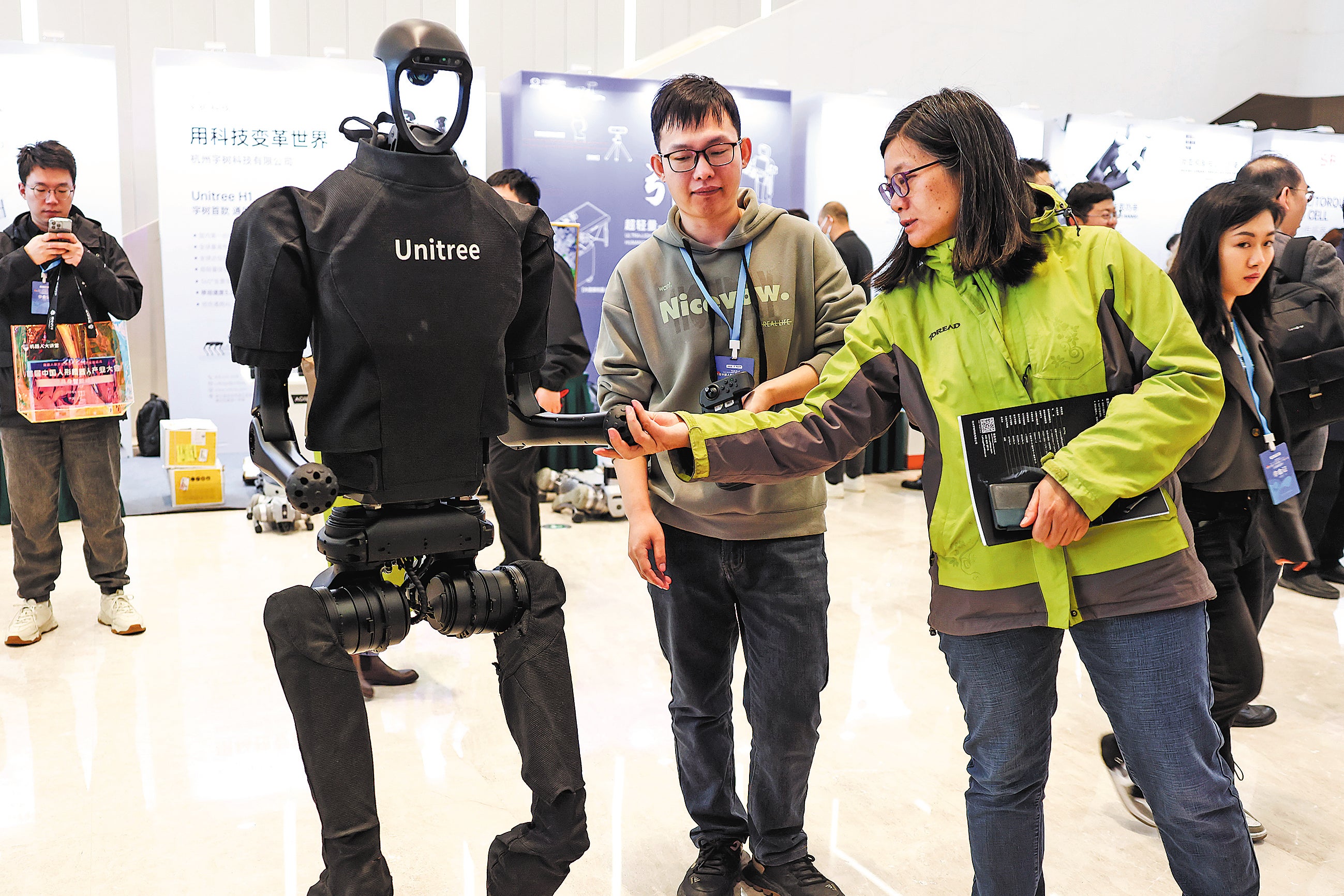Tech companies embracing humanoid robots
THE ARTICLES ON THESE PAGES ARE PRODUCED BY CHINA DAILY, WHICH TAKES SOLE RESPONSIBILITY FOR THE CONTENTS

In a market accustomed to eye-catching innovations from the likes of Tesla’s Optimus and Boston Dynamics’ Atlas, the global humanoid robotics industry was recently wowed by a new product from Chinese startup Unitree Robotics.
Its surprisingly affordable price is what sets it apart: 99,000 yuan (£10,770) for its latest G1 humanoid robot.
According to Unitree Robotics, G1 is about 50 inches tall and boasts impressive stability and flexibility, such as 180-degree body rotation and the ability to crack walnuts “barehanded”.
Despite its smaller size compared to Unitree H1 — a 5.9ft, 104lb laser-radar-equipped humanoid the company unveiled last year — the G1 is also equipped with advanced technologies, including dexterous hands. Driven by the self-developed large language model UnifoLM, G1 possesses powerful motor capabilities and intelligent learning abilities, allowing for precise object manipulation, Unitree Robotics said.
“The core components of the G1 joint unit, including the servo motor, reducer and controller, are all independently developed and produced by Unitree,” said Wang Qixin, who is in charge of marketing at Unitree Robotics.
“Currently, new technologies, products and formats represented by humanoid robots and general artificial intelligence are thriving and becoming the pinnacle of global technological innovation, a new track for future industries and a new engine for economic growth,” said Xu Xiaolan, former vice-minister of industry and information technology.

Breakthroughs in AI, she said, have provided an important driving force for the innovative development of humanoid robots, and the world is experiencing a wave of integration between humanoid robots and general AI.
General AI refers to AI’s versatility in doing multiple tasks such as writing essays, checking programme bugs and making business plans. This differentiates it from previous narrow AI projects that excel in only one area.
The total addressable market for humanoid robots is projected to reach $38 billion (£30 billion) by 2035, up more than sixfold from a previous projection of $6 billion (£4.7 billion), said Jacqueline Du, head of China Industrial Technology research and an analyst at Goldman Sachs Research.
“AI progress surprised us the most,” Du said, referring to advances such as robotic large language models — a key reason for the forecast change.
Goldman Sachs Research points out that there has been significant progress in end-to-end AI, through which models can train themselves, removing the need for a human engineer to code everything by hand. That’s speeding up robot development, allowing these devices to do more tasks and adapt to new situations, such as working outside of factories, more quickly.
There are signs that robot components, from high-precision gears to actuators, could also cost less than previously expected, leading to faster commercialisation. That’s mainly because cheaper components are now available, there are more supply chain options, and designs and manufacturing techniques have improved. In turn, this could speed up the timeline to factory applications by a year, and to consumer applications by two to four years, compared with Goldman Sachs Research’s prior estimates.
Robotics is considered the “crown jewel of manufacturing”, with humanoid robots being the ultimate goal for many across the industry. Compared with industrial robots that are valued for their specialised mechanical capabilities, the main challenge in developing humanoid robots is how to perfectly simulate human processes of perception, cognition, decision-making and execution under various scenarios, experts said.
Sensing the opportunities and challenges, both established Chinese tech companies and startups are working to strengthen their R&D capabilities in humanoid robots.
“In the past several months, a large number of new humanoid robot companies have emerged, indicating the public’s recognition of this industrial segment,” said Fu Chunjiang, vice-president of UBTech Robotics, an AI and humanoid robotics company in Shenzhen, Guangdong province.
Humanoid robots, Fu said, can provide positive feedback and form a flywheel effect with general AI, promoting faster development of the sector.
